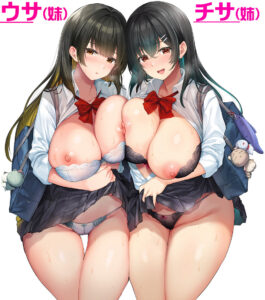
Erotic manga and doujinshi represent a significant and controversial segment of Japanese pop culture, blending artistic expression with adult themes. These works, rooted in Japan’s manga tradition, cater to niche audiences while sparking discussions about creativity, censorship, and cultural perceptions of sexuality. This article delves into the history, characteristics, and cultural impact of erotic manga and doujinshi, exploring their differences, appeal, and place in the broader manga industry.
Understanding Erotic Manga
What is Erotic Manga?
Erotic manga, often referred to as hentai in Western contexts, is a genre of Japanese comics that explicitly depict sexual content. The term hentai translates to "abnormality" or "perversion" in Japanese but is used internationally to describe pornographic manga and anime. These works range from softcore romance with suggestive imagery to hardcore depictions of sexual acts, catering to diverse tastes and fantasies. Unlike mainstream manga, erotic manga is typically aimed at adult audiences and is subject to strict regulations in Japan.
Historical Context
Erotic manga traces its roots to Japan’s historical shunga art, woodblock prints from the Edo period (1603–1868) that depicted explicit sexual scenes. These artworks, created by renowned artists like Hokusai, were both erotic and artistic, blending humor, romance, and social commentary. Modern erotic manga emerged in the post-World War II era, with the rise of manga as a mass medium. By the 1970s, dedicated adult manga magazines like Manga Erotics and Comic Kairakuten began catering to niche markets, offering serialized stories with explicit themes.
Themes and Genres
Erotic manga spans a wide range of genres, from romantic ecchi (mildly suggestive content) to hardcore hentai. Common subgenres include shonen-ai and yaoi (male-male romance), yuri (female-female romance), and bara (geared toward gay male audiences). Other themes explore fantasy, sci-fi, or taboo subjects, often pushing boundaries of conventional storytelling. The diversity of erotic manga allows it to appeal to varied demographics, with specific publications targeting men, women, or LGBTQ+ readers.
Regulation and Censorship
In Japan, erotic manga is heavily regulated under laws like Article 175 of the Penal Code, which prohibits the distribution of "obscene" materials. As a result, explicit content is often censored with pixelation or black bars over genitalia, a practice that has become iconic in the genre. Publishers must navigate these legal constraints while maintaining artistic integrity, leading to creative workarounds like suggestive imagery or implied actions. Internationally, erotic manga faces varying degrees of acceptance, with some countries imposing stricter censorship than others.
Exploring Doujinshi
What is Doujinshi?
Doujinshi, meaning "self-published works," are independently created manga, often by amateur artists or small groups. While doujinshi encompasses all genres, a significant portion is erotic, making it a key player in the adult manga landscape. Unlike commercial erotic manga, doujinshi is typically sold at conventions like Comiket (Comic Market) in Tokyo or through online platforms, allowing creators to explore niche or experimental themes without the constraints of mainstream publishers.
Origins and Evolution
Doujinshi emerged in the 1970s as a subculture within Japan’s manga fandom, driven by fans wanting to create their own stories featuring beloved characters or original concepts. Erotic doujinshi gained prominence in the 1980s, fueled by the growing popularity of anime and manga. These works often feature parody doujinshi, where characters from popular series (e.g., Naruto or Attack on Titan) are reimagined in explicit scenarios. Original doujinshi, with entirely new characters and stories, also thrive, showcasing creators’ unique visions.
Creative Freedom and Community
Doujinshi’s appeal lies in its creative freedom. Without the editorial oversight of mainstream publishers, artists can explore taboo subjects, unconventional pairings, or experimental art styles. This has made doujinshi a breeding ground for new talent, with some creators transitioning to professional manga careers. Events like Comiket, held biannually, draw thousands of creators and fans, fostering a vibrant community where erotic doujinshi is a major draw. Online platforms like Pixiv and DLsite have further expanded doujinshi’s reach, making it accessible globally.
Differences from Erotic Manga
While both erotic manga 同人 and doujinshi feature adult content, their production and distribution differ significantly. Erotic manga is typically published by established companies, serialized in magazines, and subject to editorial guidelines. Doujinshi, by contrast, is self-published, allowing greater creative control but often lacking the polish or budget of commercial works. Doujinshi also tends to focus on niche or fan-driven content, whereas erotic manga caters to broader audiences through mainstream channels.

Cultural Impact and Controversies
Popularity and Market Reach
Erotic manga and doujinshi constitute a significant portion of Japan’s manga industry. In 2023, the global manga market was valued at over $12 billion, with adult genres contributing a notable share. Erotic manga magazines like Comic Hotmilk and Megastore have loyal readerships, while doujinshi sales at events like Comiket generate millions of yen annually. Internationally, platforms like Fakku and Hentai Haven distribute translated erotic manga, catering to a growing global エロ漫画 audience.
Societal Perceptions
In Japan, erotic manga and doujinshi occupy a complex cultural space. While manga is widely accepted, adult genres face scrutiny for their explicit content. Critics argue that these works perpetuate harmful stereotypes or objectification, particularly in genres depicting non-consensual scenarios. Supporters, however, view them as legitimate artistic expressions, emphasizing their role 同人 in exploring human sexuality and fantasy. The doujinshi community, in particular, is celebrated for its inclusivity, offering spaces for marginalized voices, such as LGBTQ+ creators.
Legal and Ethical Debates
Erotic manga and doujinshi have sparked debates about censorship and freedom of expression. In Japan, strict obscenity laws limit what can be depicted, leading to ongoing discussions about balancing artistic freedom with societal norms. Internationally, these works face challenges in countries with conservative censorship policies. Additionally, parody doujinshi raises intellectual property concerns, as creators use copyrighted characters without permission. While most rights holders tolerate doujinshi as fan culture, legal disputes occasionally arise.
Global Influence and Accessibility
International Appeal
The global rise of anime and manga has fueled demand for erotic manga and doujinshi. Western fans, in particular, have embraced these works, with translations available through licensed platforms and fan-driven scanlation groups. The accessibility of digital doujinshi on sites like DLsite and Patreon has further broadened their reach, allowing creators to connect directly with international audiences. This global exchange has also influenced Western comics, with some artists adopting manga-style art for adult content.
Challenges in Translation
Translating erotic manga and doujinshi poses unique challenges due to cultural nuances and explicit language. Translators must balance fidelity to the original text with sensitivity to cultural differences, as certain themes may be taboo in other countries. Additionally, the visual nature of manga means that text embedded in artwork (e.g., sound effects) requires careful localization. Despite these challenges, dedicated publishers and fan communities have made erotic manga and doujinshi widely available in multiple languages.
Choosing and Engaging with Erotic Manga and Doujinshi
Finding Quality Content
For those interested in exploring erotic manga, reputable publishers like Fakku and Project-H offer curated selections with high-quality translations. Doujinshi can be purchased at conventions or through platforms like DLsite, which categorize works by genre, artist, or series. Beginners should start with well-reviewed titles or explore specific genres that align with their interests, such as yaoi or yuri for romantic themes.
Responsible Consumption
Consumers should approach erotic manga and doujinshi with awareness of their explicit nature and cultural context. Supporting licensed publishers ensures creators are fairly compensated, while respecting age restrictions and local laws is crucial. Engaging with the doujinshi community, whether through conventions or online forums, can also enhance appreciation for the artistry and effort behind these works.
Erotic manga and doujinshi are vibrant components of Japanese pop culture, offering a unique blend of art, storytelling, and adult themes. While erotic manga provides professionally crafted narratives through mainstream channels, doujinshi celebrates creative freedom and fan-driven passion. Together, they reflect the diversity of human expression, navigating complex cultural and legal landscapes. Whether you’re a curious newcomer or a seasoned fan, exploring these genres offers a fascinating glimpse into Japan’s manga subculture, where creativity knows few bounds.